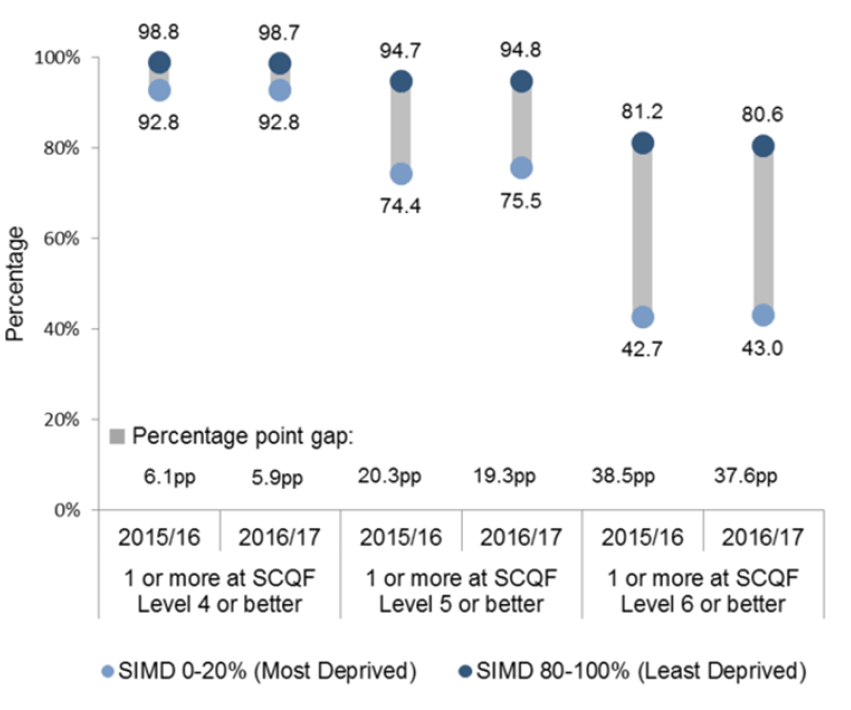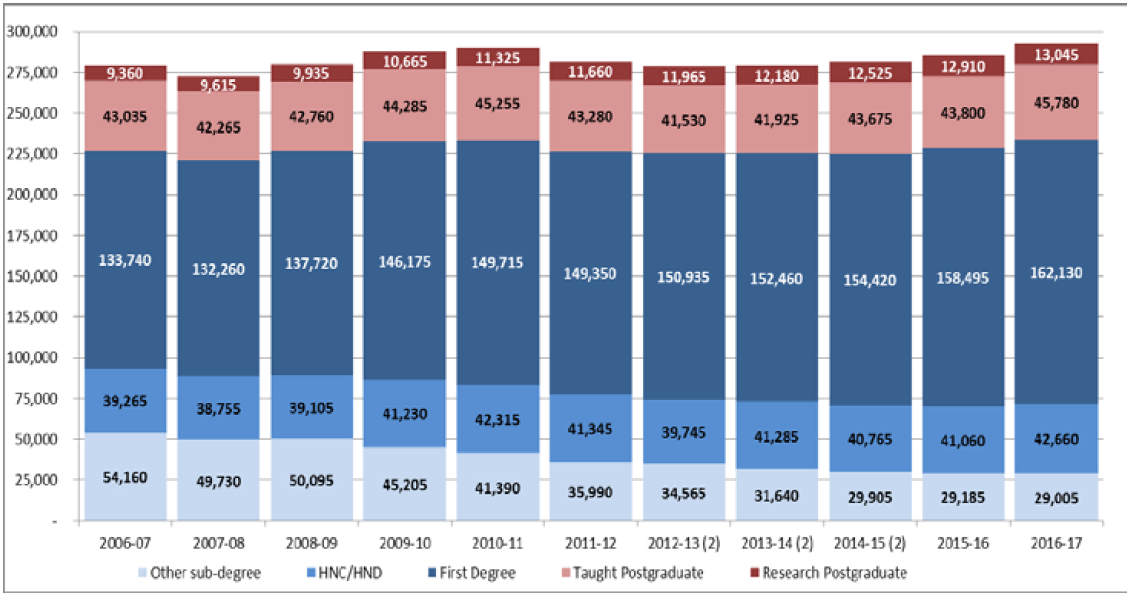Children's Health and Wellbeing - Horizon Scanning Review
The review summarises the predicted societal trends and shifts that will likely shape the lives of children and young people over the next decade.
6. Technology
This section discusses current and future technology trends in relation to their impact on the labour market and impact on social connection.
6.1 Internet access trends
The number of households with access to the internet has increased substantially over the last decade, from 53% in 2006 to 85% in 2017 (see Figure 17). The ways in which people access the internet are also diversifying as new technologies become available. Notably, 78% of people in the UK now access the internet via a smart phone, compared to just 34% in 2011.[32]
Figure 17. Households with home internet access by year

Source: Scottish Household Survey 2017
6.2 Trends in social media use
There has been a marked increase in social media use in the UK over the last decade. Highest use is among 15-24 year olds (89%) and 25-34 year olds (88%) (Figure 18). Young people also engage more often with specific platforms which older groups do not engage with.[33]
Figure 18. Social media use by age

Source: Ipsos MORI 2018
Increased use of social media by children has been linked to cyber-bullying and online abuse, exposure to negative forms of user-generated content and converging of offline and online networks. Additionally, there is evidence to suggest that the extent of risk depends upon the development stage and social circumstances of the child, with girls and lower socio-economic groups being most at risk of cyber-bulling and online abuse, and girls from lower income groups being at increased risk of sexualisation from social media use.[34,35]
6.3 Automation projections
Workplace robots are projected to continue replacing workers in low-skill, routine or dangerous work, while advances in robotics may also lead to the creation of new fields/roles that are have not yet been envisaged (the role of the web designer did not exist, nor was imagined prior to 1990). Adapting workers to these new kinds of roles could, however, take considerable time.[36]
It is possible that legislation will be introduced to try to prevent or limit the use of robots in some areas, in order to safeguard human jobs, although it is not clear how effective this would be in the face of market forces. It is also unclear whether new jobs will be created at a rate sufficient to replace those that are lost as some automated processes become cheaper than even the lowest-paid human workers[37].
6.4 Key points
- Young people’s use of social media is more frequent and more diverse in nature than in other generations. If used heavily, there could be a range of impacts, such as cyber-bullying and/or sexualisation.
- Young people’s future working lives will increasingly be influenced by automation and robotic technology: automation is increasingly likely to replace people in low skilled, routine or dangerous work. Advances in robotic technology may lead to the creation of new higher-skilled jobs, but adapting the current and future work force may take considerable time.
Contact
Email: socialresearch@gov.scot
There is a problem
Thanks for your feedback